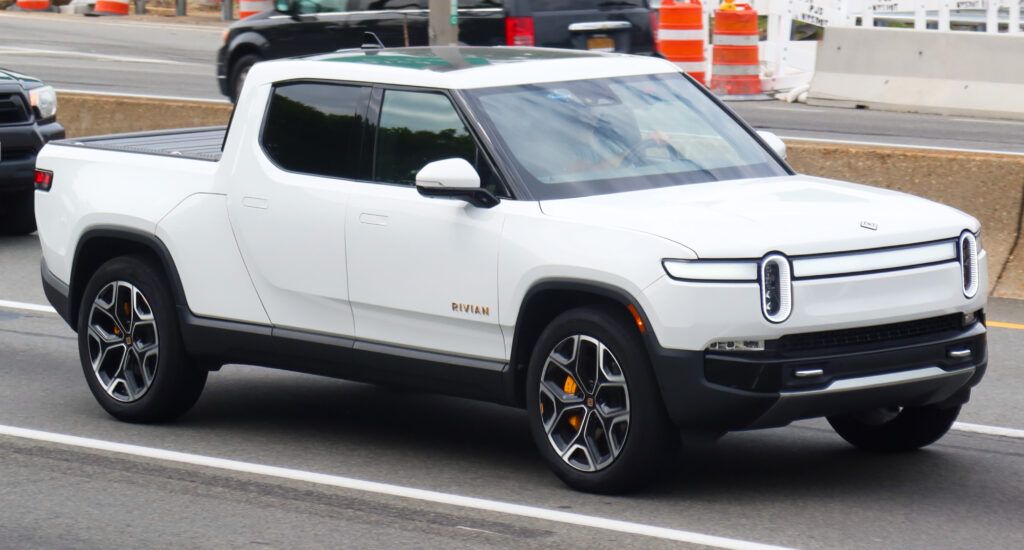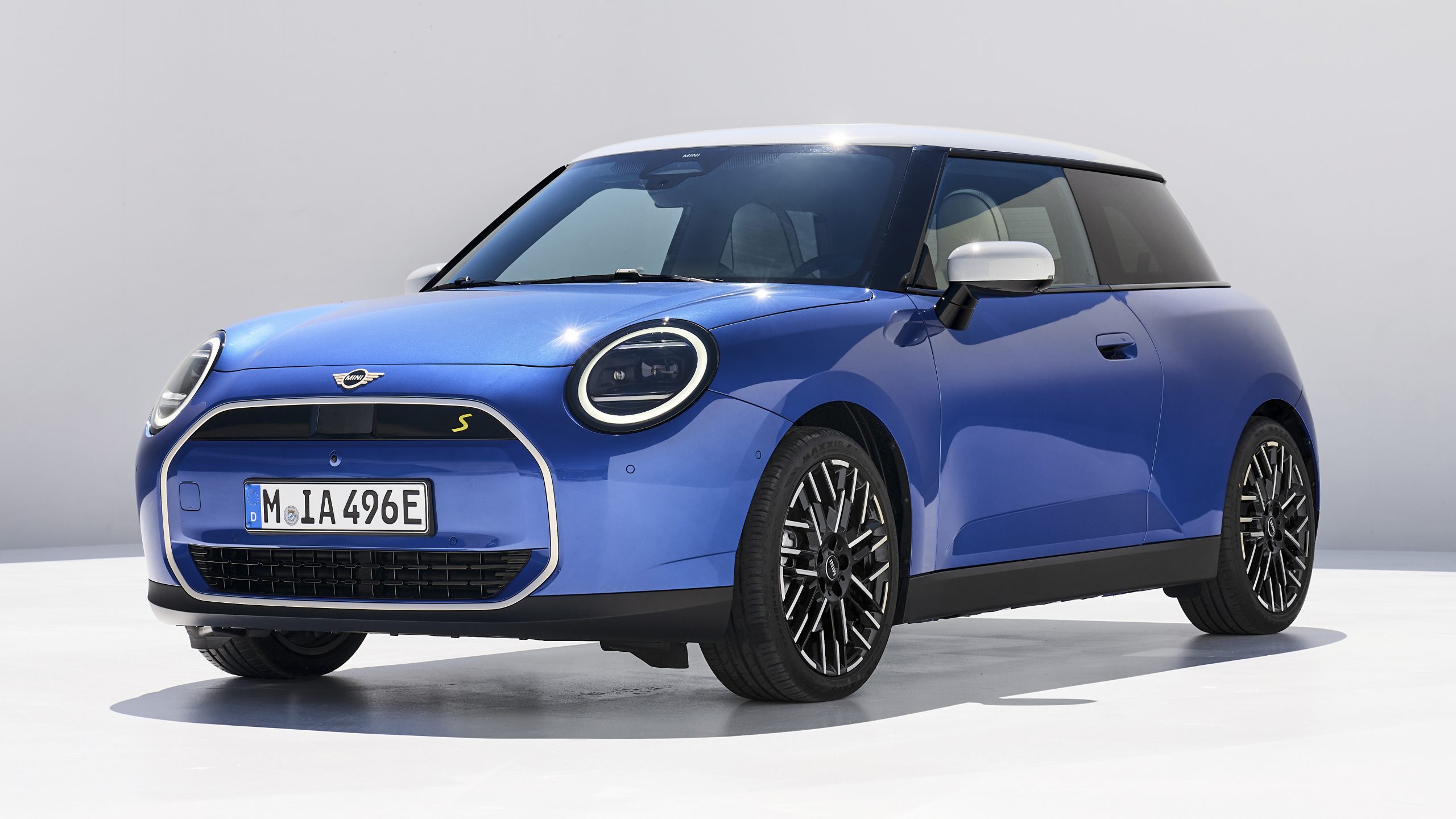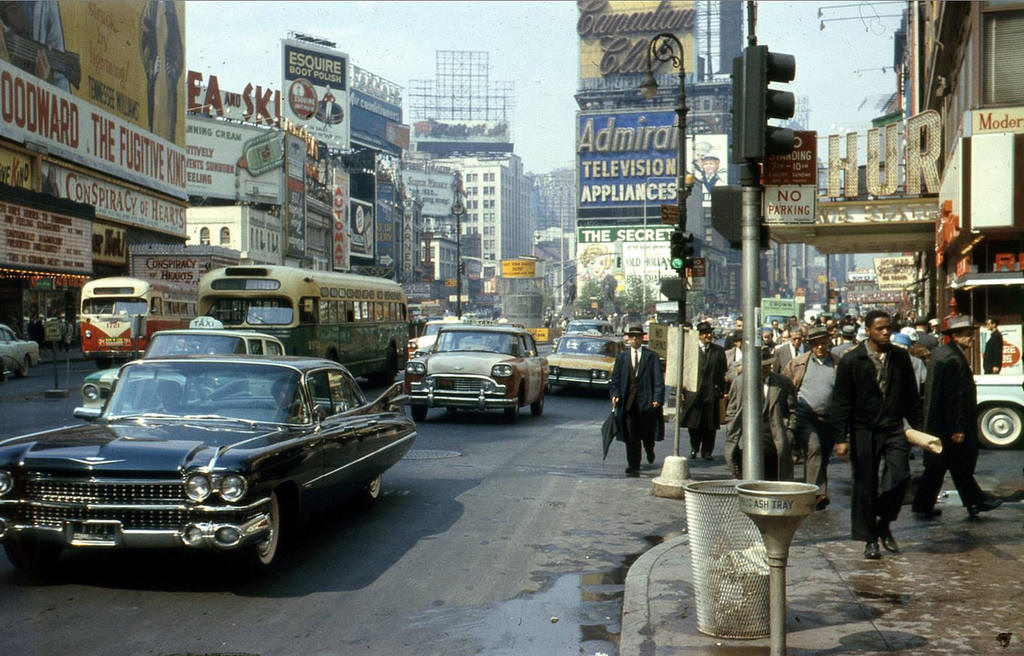
Alright, petrolheads, buckle up and prepare for a high-octane journey back to arguably the most electrifying decade in automotive history: the glorious 1960s! Remember that spine-tingling feeling when you hear a genuinely classic engine ignite, a deep, resonant growl that doesn’t just make noise, but sings a song of pure, unadulterated history? I certainly do. It vividly reminds me of a neighbor’s dusty ’67 Camaro SS, tucked away like a sleeping beast, only to burst into life one unforgettable summer afternoon. That wasn’t just an engine turning over; it was the past roaring into the present, drawing the entire neighborhood out to marvel.
The 1960s, a decade of monumental cultural shifts and audacious technological leaps, undeniably gave birth to automotive machines imbued with an almost palpable soul. These weren’t mere conveyances; they were characters, each boasting a distinctive styling that could effortlessly turn heads from across a crowded boulevard, and engines that literally made hearts race faster than any dragster tearing down a quarter-mile strip. They profoundly defined an era, especially in America, where big engines and even bolder styling became a national obsession, yet the decade’s engineering brilliance and aesthetic daring were global phenomena, spanning continents and cultures.
Some of these magnificent beasts were instant legends, capturing imaginations the very moment they rolled off the production line. Others, perhaps, were a little underappreciated in their prime, their true genius and groundbreaking nature only fully recognized by discerning enthusiasts and collectors years later. But every single one earned a special reverence that only deepens with age, transforming from mere vehicles into cherished artifacts of speed and design. We’re talking about cars that serious car enthusiasts still dream about today, machines whose distinctive profiles and the thunderous rumble of their V8 engines make them instantly recognizable. It’s high time we pulled back the dusty tarps and rediscovered these unforgettable, rare icons.

1. **1962 Ferrari 250 GTO**Okay, so we’re diving straight into the deep end, aren’t we? In the pantheon of automotive legends, one name reigns supreme: the 1962 Ferrari 250 GTO. This car isn’t just a machine; it’s a profound statement, a piece of automotive divinity screaming elegance from every curve. This magnificent creation is so spectacularly rare, you’d frankly have an easier time finding a four-leaf cloverpatch the size of a football field.
This car, my friends, isn’t merely a collectible to be tucked away in some climate-controlled vault. Oh no. It is, quite literally, a piece of art on wheels, designed with such exquisite precision and aesthetic grace that it transcends mere transportation. Every line, every meticulously placed vent, every perfect proportion of the 250 GTO speaks volumes about a golden era of automotive design, weaving unparalleled beauty and brutal, uncompromising performance into a seamless tapestry.
And what about the heart of this beast? Underneath that impossibly beautiful, sculpted hood, you’ll find a glorious V12 engine that doesn’t just run; it *purrs* like a contented, yet incredibly powerful, predator. The very sound of that engine, a glorious symphony of mechanical precision and raw power, is enough to send shivers down any true petrolhead’s spine. It’s an auditory experience as captivating as its visual presence.
With only a breathtakingly scarce 36 of these masterpieces ever built, owning one isn’t just a matter of immense wealth or status. It’s akin to possessing a tangible, roaring piece of racing heritage, a slice of history that few will ever get to experience. Each one is a testament to Enzo Ferrari’s unwavering vision and a pivotal moment in the history of motorsport. This isn’t just a car; it’s a legend solidified in metal, passion, and an enduring legacy of unparalleled excellence.
Car Model Information: 2024 Subaru Outback Premium
Name: Ferrari 250 GTO
Caption: 1963 Ferrari 250 GTO (chassis 4153GT)
Manufacturer: Ferrari
Production: 1962–1964,(36 produced)
Designer: Giotto Bizzarrini,Scaglietti
Class: Sports car
BodyStyle: berlinetta
Related: Ferrari 330#330 LMB,Ferrari P#250 LM
Layout: FR layout
Engine: 2,953 cc,Ferrari Colombo engine#250,Overhead camshaft#Single Overhead camshatf,Weber carburetor,Compression ratio
Powerout: 300 PS
Abbr: on
Order: flip @ 5500 rpm
Transmission: Manual transmission
Wheelbase: 2400 mm
Length: 4325 mm
Width: 1600 mm
Height: 1210 mm
Weight: convert
Predecessor: Ferrari 250 GT SWB
Successor: Ferrari 250 LM,Ferrari 288 GTO
Categories: All articles lacking reliable references, All articles needing additional references, All articles with bare URLs for citations, All articles with unsourced statements, Articles lacking reliable references from March 2022
Summary: The Ferrari 250 GTO is a grand tourer produced by Ferrari from 1962 to 1964 for homologation into the FIA’s Group 3 Grand Touring Car category. It was powered by Ferrari’s Tipo 168/62 Colombo V12 engine. The “250” in its name denotes the displacement in cubic centimeters of each of its cylinders; “GTO” stands for Gran Turismo Omologato, Italian for “Grand Touring Homologated”.
Just 36 of the 250 GTOs were manufactured between 1962 and 1964. This includes 33 cars with 1962–63 bodywork (Series I) and three with 1964 (Series II) bodywork similar to the Ferrari 250 LM. Four of the older 1962–1963 (Series I) cars were updated in 1964 with Series II bodies.
When new, the 250 GTO cost $18,000 in the United States, with buyers personally approved by Enzo Ferrari and his dealer for North America, Luigi Chinetti. This model has since become highly desired by automobile collectors and sales have repeatedly set price records. The current record for world’s most expensive Ferrari was set in June 2018 when a 1963 250 GTO (chassis 4153GT) was sold in a private sale for $70 million.
In 2004, Sports Car International placed the 250 GTO eighth on their list of Top Sports Cars of the 1960s, and nominated it the top sports car of all time. Similarly, Motor Trend Classic placed the 250 GTO first on a list of the “Greatest Ferraris of All Time”. Popular Mechanics named it the “Hottest Car of All Time”.
Get more information about: Ferrari 250 GTO
Buying a high-performing used car >>>
Brand: Ferrari Model: 250 GTO
Price: $28,398 Mileage: 29,085 mi.
Read more about: The Curated Canvas: Inside Ralph Lauren’s Exclusive Garage of Vintage Race Cars and Modern Exotic Hypercars
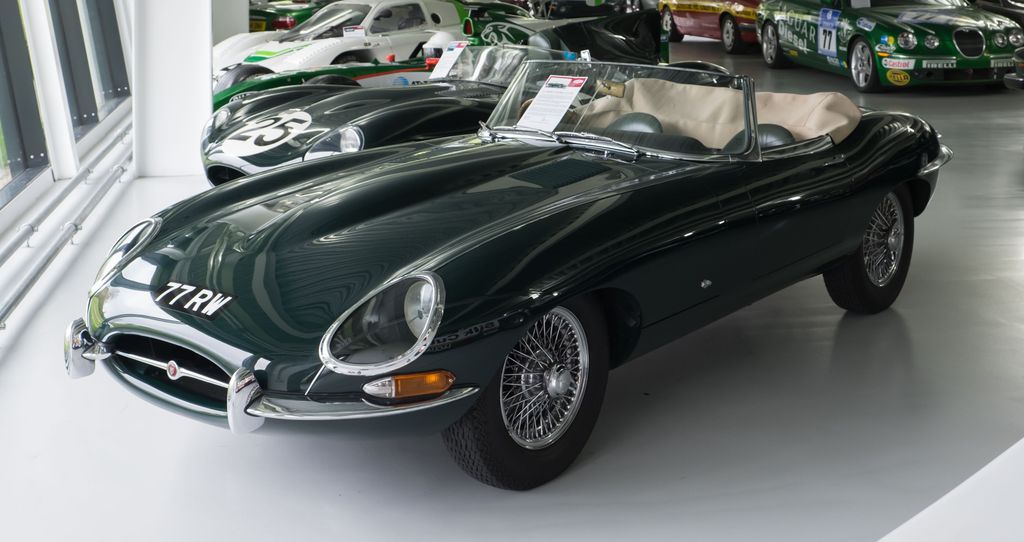
2. **1961 Jaguar E-Type**From Italian masterpieces, we gracefully leap across the English Channel to a British icon that almost defies adequate description. The 1961 Jaguar E-Type was famously lauded by none other than Enzo Ferrari himself, who, with almost grudging admiration, called it “the most beautiful car ever made.” When a man whose own creations defined automotive beauty bestows such an extraordinary compliment, you instinctively know you’re gazing upon something truly, profoundly special. This isn’t just a car; it’s a flowing symphony in steel and leather, a rolling piece of architectural genius.
Its elongated hood, stretching out with the elegance and tension of a greyhound in full stride, and its exquisitely sculpted bodywork don’t just hint at speed and sophisticated power; they outright *promise* it. The E-Type’s utterly flowing lines and perfect, almost unattainable, proportions were revolutionary for their time, presenting a stunning, harmonious blend of cutting-edge aerodynamics and pure, unadulterated visual allure that has scarcely been matched since. It looks incredibly fast even when standing perfectly still.
The E-Type possessed formidable brawn to perfectly match its undeniable beauty, often found fiercely — and quite successfully — competing on the racetracks of the world. It bravely battled against the likes of Ferrari and other European stalwarts, proving unequivocally that breathtaking elegance and raw, uncompromising power could, indeed, coexist in perfect, harmonious balance, delivering victory and spectacle in equal measure.
Whether you stumble upon it gleaming impeccably under museum spotlights or have the sheer thrill of witnessing it tearing around a historic racetrack, the E-Type remains an unassailable icon of British automotive history. It captivates hearts and minds with every single, elegant curve, inspiring awe and admiration. It’s an everlasting symbol of what truly happens when unbridled passion meets engineering brilliance, wrapped in a package of timeless beauty that truly transcends generations.
Read more about: Gearheads, Start Your Engines! These 14 Legendary Vehicles Revved Up Expectations and Blew Them Away!
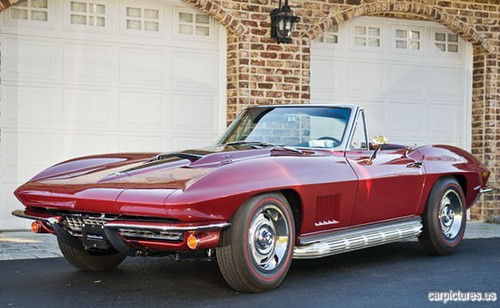
3. **1967 Chevrolet Corvette Sting Ray 427**Alright, let’s haul it back home to the land of big V8s and even bigger statements, where unbridled muscle and undeniable swagger were masterfully sculpted into gleaming American metal. The 1967 Chevrolet Corvette Sting Ray 427 isn’t merely a car; it’s a roaring, defiant statement, a genuine rolling sculpture imbued with immense, palpable muscle that absolutely matched its menacing, predatory good looks. This was the final, glorious hurrah of the legendary C2 generation, and many would passionately argue, its absolute finest iteration.
That iconic stinger hood, with its bold, aggressive stripes, and those distinctively bulging fenders didn’t just subtly hint at colossal speed; they positively *screamed* it from the highest rooftops. This Corvette looked like it was actively devouring asphalt even before you had the chance to turn the key, possessing an inherent dynamic tension in its design. It promised an explosive driving experience, hinting at the power lurking beneath its sleek exterior.
And what about the monumental heart of this beast? Prepare yourselves: a ferocious, absolutely massive 427-cubic-inch big-block V8 engine that didn’t just make it a fast car; it definitively made it a *certified street beast*. It was capable of terrifying lesser vehicles into submission and thrilling its driver with an almost brutal surge of power at every single flex of the throttle. This was pure, unadulterated American power, delivered with aggressive elegance.
With its incredibly sharp, predatory lines, those stunning, era-defining knock-off wheels, and a thunderous, unmistakable exhaust note that could quite literally wake the dead, this Corvette didn’t just turn heads. It practically *melted* them into puddles of admiration and envy. It was the quintessential embodiment of American cool, fusing sophisticated design with raw, untamed power. Today, the ’67 Sting Ray 427 stands as a gleaming, undisputed crown jewel for serious collectors and unrepentant power purists alike, a timeless symbol of a golden age where horsepower reigned supreme.
Car Model Information: 2024 BMW X5 sDrive40i
Name: Chevrolet Corvette (C2)
Caption: 1963 Chevrolet Corvette Sport Coupe
Manufacturer: Chevrolet
Aka: Chevrolet Corvette Sting Ray
Production: August 1962–July 1967
ModelYears: 1963–1967
Platform: Series 0800 (1962-1964),Series 194 (1965-1967)
Chassis: Body-on-frame
Assembly: St. Louis, Missouri
Predecessor: Chevrolet Corvette (C1)
Successor: Chevrolet Corvette (C3)
Class: Sports car
BodyStyle: Convertible (car),coupé
Layout: Front-engine, rear-wheel-drive layout
Engine: {{cvt,327,cuin,L,1,Chevrolet small-block engine (first- and second-generation)#327,V8 engine
Wheelbase: cvt
Length: cvt
Width: cvt
Height: cvt
Weight: cvt
Transmission: manual transmission,manual transmission,Powerglide
Related: Bill Thomas Cheetah
Designer: Larry Shinoda
Categories: 1960s cars, All articles needing additional references, All articles with specifically marked weasel-worded phrases, All articles with unsourced statements, Articles needing additional references from July 2024
Summary: The Chevrolet Corvette (C2) is the second-generation Corvette sports car, produced by the Chevrolet division of General Motors (GM) for the 1963 through 1967 model years.
Get more information about: Chevrolet Corvette (C2)
Buying a high-performing used car >>>
Brand: Chevrolet Model: Corvette Sting Ray
Price: $37,758 Mileage: 39,959 mi.
Read more about: Steering Clear of Danger: An In-Depth Look at 14 Vehicles with Concerning Safety Scores for Savvy Consumers
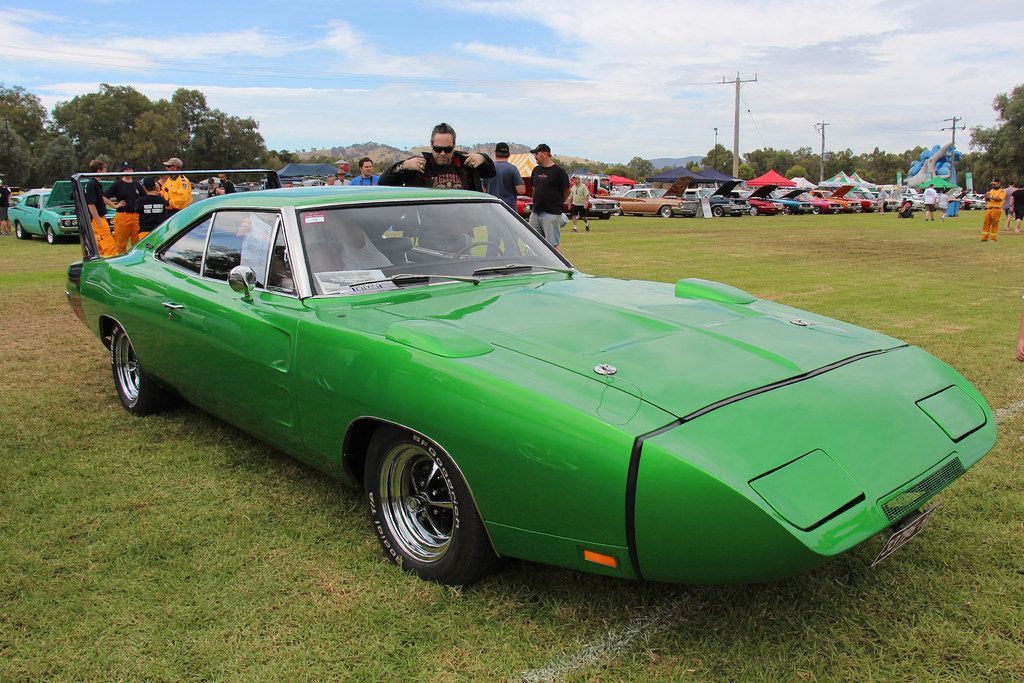
4. **1969 Dodge Charger Daytona**If you’ve ever found yourself wondering what a superhero would choose to drive if they absolutely demanded pure, unadulterated muscle combined with aerodynamics designed for interstellar travel, then your search ends here. Look no further than the truly outlandish, utterly unforgettable 1969 Dodge Charger Daytona. Seriously, with its incredibly aerodynamic, almost impossibly pointed nose cone and that absolutely enormous, sky-scaping rear wing, this car isn’t just a vehicle; it’s a living, breathing cartoon character brought to life, a literal superhero in a very thinly veiled disguise. Every inch of its radical design screamed one thing, and one thing only: speed.
Born directly out of the fiercely competitive and utterly brutal world of NASCAR, where every minuscule fraction of a second could mean the difference between victory and defeat, the Daytona was a machine engineered with a singular purpose. It was designed for unbeatable velocity and rock-solid stability at speeds that, frankly, bordered on the insane for its time. It quickly transcended its racing origins, rapidly becoming an instant, unforgettable icon in the burgeoning muscle car universe, known not just for its earth-shattering straight-line speed but for a design so unique, so aggressively audacious, it practically ripped up the automotive rulebook.
The controversial nose cone added 18 inches to the Charger’s length, while the monstrous 23-inch-tall rear wing, perched high above the trunk lid, was designed to provide crucial downforce, keeping the car glued to the track at speeds exceeding 200 mph. And what roared so majestically beneath that extended, aerodynamic bonnet? A powerful, thoroughly menacing V8 engine, of course, ready to unleash a cacophony of raw power that could shake the very tarmac beneath its tires. This was a car built for performance, designed to win, and imbued with an aggressive spirit.
Though it might appear as if it’s been ripped straight from the fantastical pages of a wild comic book, the Charger Daytona is very much a real, tangible beast of automotive history. Today, it stands as an immensely prized treasure for discerning collectors, a testament to a time when designers were given the rare green light to go absolutely bonkers in the relentless pursuit of ultimate performance, creating a car that is as thrilling to behold as it is to imagine piloting.
Car Model Information: 2024 BMW X5 sDrive40i
Name: Dodge Charger Daytona
Caption: 1969 Dodge Charger Daytona
Manufacturer: Dodge
Production: 1969–1970,2006–2009,2013,2017–2023
Class: Muscle car
Layout: FR layout
Categories: 1960s cars, 1970s cars, 2000s cars, All articles needing additional references, All articles with unsourced statements
Summary: Dodge produced three separate models with the name Dodge Charger Daytona, all of which were modified Dodge Chargers. The name was taken from Daytona Beach, Florida, which was an early center for auto racing and still hosts the Daytona 500, NASCAR’s premier event. The original Dodge Charger Daytona was designed to beat the competition in NASCAR racing. It was the first NASCAR vehicle to reach 200 miles per hour, which was a major milestone at the time.
Get more information about: Dodge Charger Daytona
Buying a high-performing used car >>>
Brand: Dodge Model: Charger Daytona
Price: $37,758 Mileage: 39,959 mi.
Read more about: Hollywood’s High Octane: Tom Cruise’s 15 Vehicles That Define His Adrenaline Obsession
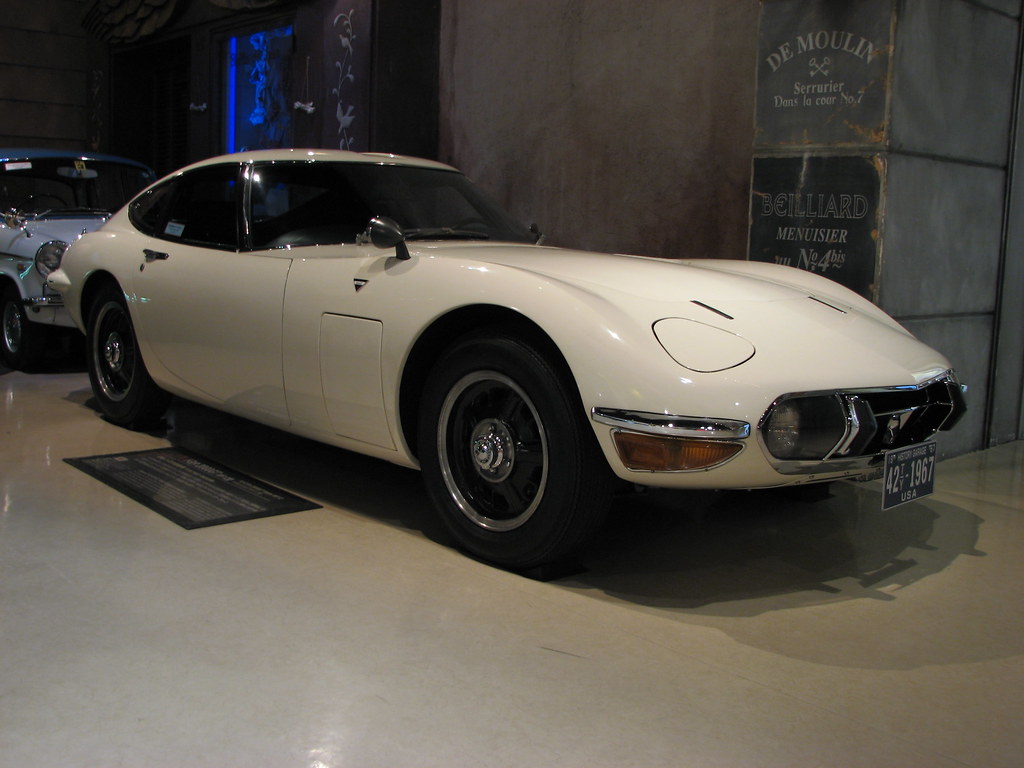
5. **1967 Toyota 2000GT**Now, for something that offers a stark, yet equally exhilarating, contrast: a graceful shift from raw American power to a vision of refined, groundbreaking elegance emanating from the East. Imagine a car so exquisitely conceived, so strikingly ahead of its time, that even the world’s most famous fictional spy, James Bond himself, famously chose to pilot it. We are, of course, talking about the utterly stunning 1967 Toyota 2000GT, a car that was far more than just Japan’s commendable answer to the established European sports cars. No, the 2000GT was a profound declaration.
With its breathtakingly refined lines, a sleek, impossibly low-slung profile that exuded an almost ethereal sophistication, and a host of remarkably high-tech features for its era, the 2000GT didn’t just valiantly compete; it utterly *set the stage* for Japan’s spectacular future success in the fiercely competitive global automotive arena. This wasn’t merely about mimicry; it was about genuine, bold innovation and charting a completely new direction. The car’s fastback styling, pop-up headlights, and long, flowing bonnet gave it an undeniable presence.
The development of the 2000GT was a collaborative effort, originally conceived by Yamaha as a project for Nissan. When Nissan turned it down, Toyota, recognizing its immense potential, seized the opportunity. This daring project showcased Toyota’s engineering prowess, pushing boundaries in performance and luxury. It was a halo car, designed to fundamentally change the world’s perception of Japanese automobiles from utilitarian to desirable, a goal it achieved with resounding success.
And what purred with such precision and grace beneath its perfectly sculpted hood? Its inline-six engine didn’t just run; it sang a beautiful, mechanical melody, delivering a driving experience that was both exhilaratingly sporty and incredibly refined, a balance rarely struck so perfectly. This car, my friends, is not merely a beautiful face; it’s a rare and intensely desirable piece of history, a true collector’s gem. To own a 2000GT is like holding a physical embodiment of automotive diplomacy, bridging the perceived gap between East and West with undeniable flair.
Read more about: Remember These Days? 14 Iconic Manual Transmissions That Vanished Or Are Fading From Our Car Options
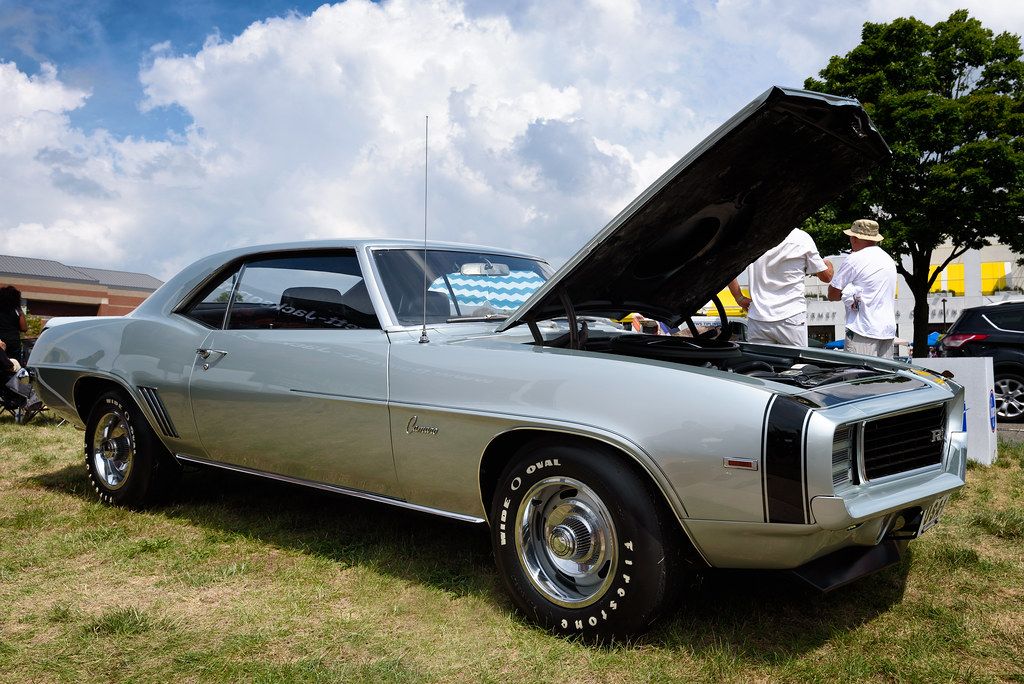
6. **1969 Chevrolet Camaro ZL1**Hold on exceptionally tight, because we’re about to take a whirlwind return trip to the very heart of American muscle, but this time with an almost mythical, utterly extreme twist that redefined the boundaries of raw power. The 1969 Chevrolet Camaro ZL1 wasn’t merely another entry in a crowded field of performance cars; it was Camaro’s ultimate, definitive mic-drop moment, a searing declaration of brute force that was astonishingly lightweight and terrifyingly, brutally fast, built from the ground up for one solitary, uncompromising purpose: battle on the dragstrip and the street.
Chevrolet, in a move that can only be described as delightfully devious and supremely cunning, effectively *snuck* this absolute monster into production. Their primary motivation was for racing homologation, a necessary step to qualify the car for various racing series, particularly in drag racing. Their ingenious method involved stuffing an all-aluminum 427-cubic-inch V8 engine, an absolute behemoth typically reserved for much larger applications, under the hood of a seemingly innocent, standard-issue Camaro. The sheer audacity and brazen engineering required to accomplish this feat were incredible, bending the very definition of a production car.
What resulted from this audacious endeavor was a car that, while bearing the familiar lines of a street-legal machine, roared with the raw, untamed, guttural fury of a purebred dragstrip demon, overtly ready to tear apart any challenger. The lightweight aluminum block was a game-changer, reducing critical front-end weight and allowing for blistering acceleration and improved handling, making it an absolute weapon on the strip. This was peak muscle car engineering, pushing the envelope to its absolute limit.
The numbers associated with the ZL1 tell a story of extreme, almost unbelievable rarity: a mere 69 of these incredible machines were ever meticulously made, cementing its status not just as a rare car, but as the absolute, undisputed unicorn of first-generation Camaros. This was not just fast for the boisterous 1960s; it’s *still* blisteringly, eye-wateringly fast by even the most demanding modern standards, a profound testament to its engineering purity and timeless power. Today, collectors pay small fortunes just for the unparalleled privilege of owning one.
Alright, petrolheads, we’ve just scratched the surface of the magnificent beasts that roamed the highways and racetracks of the 1960s. But trust me, the journey is far from over! We’re diving even deeper into the glorious abyss of forgotten legends, those magnificent machines that truly pushed the boundaries of performance, rarity, and utterly unconventional engineering. Prepare yourselves for another wave of automotive icons that cemented their places in history with their sheer audacity and unforgettable presence. Let’s crank up the volume and rediscover more of these sensational, high-octane creations!
Car Model Information: 2024 BMW X5 sDrive40i
Name: Chevrolet Camaro
Manufacturer: Chevrolet
Production: 1966–2002,2009–2023
ModelYears: 1967–2002,2010–2024
Class: Pony car
BodyStyle: coupe,convertible
Platform: GM F platform,GM Zeta platform,GM Alpha platform
Layout: Front-engine, rear-wheel-drive layout
Categories: 1970s cars, 1980s cars, 1990s cars, 2+2 coupés, 2000s cars
Summary: The Chevrolet Camaro is a mid-size American automobile manufactured by Chevrolet, classified as a pony car. It first went on sale on September 29, 1966, for the 1967 model year and was designed to compete with the Ford Mustang. The Camaro shared its platform and major components with the Firebird, produced by General Motors’ Pontiac division that was also introduced for the 1967 model year.
Four distinct generations of the Camaro were developed before production ended in 2002. The nameplate was revived on a concept car that evolved into the fifth-generation Camaro; production started on March 16, 2009.
Production of the sixth generation of the Camaro ended in December 2023, for the 2024 model year.
Get more information about: Chevrolet Camaro
Buying a high-performing used car >>>
Brand: Chevrolet Model: Camaro ZL1
Price: $37,758 Mileage: 39,959 mi.
Read more about: Gearhead God: A High-Octane Tour Through John Cena’s Legendary American Muscle Car Empire

7. **1965 Ford Mustang Fastback**The Mustang may have launched in ’64, but the ’65 Fastback was the real start of a legend. With its swept-back roofline and galloping-pony attitude, it married style with genuine street performance. This wasn’t just another car; it was a cultural phenomenon waiting to happen, a machine that democratized sporty driving for the masses, making performance accessible and desirable.
Enthusiasts flocked to the 2+2 design, and engine options—from thrifty sixes to snarling V8s—made it a hit with everyone from the frugal commuter to the aspiring drag racer. It offered an unparalleled blend of versatility and panache, allowing owners to truly make their Mustang their own. It captured the hearts of a generation, becoming synonymous with youthful freedom and American ingenuity.
Affordable then and desirable now, it captured the American dream in sheet metal and chrome. Its iconic silhouette became instantly recognizable, a symbol of optimism and the open road, especially when viewed in its rakish Fastback guise. The sheer volume of these cars sold cemented its place not just in automotive history, but in the very fabric of American popular culture.
It’s the ‘60s car every collector still dreams of, a timeless classic that continues to inspire custom builds, restorations, and legions of devoted fans. Driving a ’65 Fastback isn’t just about getting from A to B; it’s about connecting with a powerful legacy, a feeling of pure, unadulterated automotive joy that few other vehicles can match.
Car Model Information: 2008 Ford Mustang GT Premium
Name: Ford Mustang
Caption: 2018 Ford Mustang GT 5.0
Aka: Ford T5 (Germany)
Manufacturer: Ford Motor Company
Production: March 1964 – present
ModelYears: 1965–present
Class: Unbulleted list
BodyStyle: Unbulleted list
Layout: Front-engine, rear-wheel-drive layout
Categories: 1970s cars, 1980s cars, 1990s cars, 2+2 coupés, 2000s cars
Summary: The Ford Mustang is an American automobile manufactured and marketed by Ford since 1964, as Ford’s longest nameplate in continuous production. Currently in its seventh generation, it is the fifth-best selling Ford car nameplate. The namesake of the “pony car” automobile segment, the Mustang was developed as a highly styled line of sporty coupes and convertibles derived from existing model lines, initially distinguished by its pronounced “long hood, short deck” proportions.
Originally predicted to sell 100,000 vehicles yearly, the 1965 Mustang became the most successful vehicle launch since the 1927 Model A. Introduced on April 17, 1964 (16 days after the Plymouth Barracuda), over 400,000 units were sold in its first year; the one-millionth Mustang was sold within two years of its launch. In August 2018, Ford produced the 10-millionth Mustang; matching the first 1965 Mustang, the vehicle was a 2019 Wimbledon White convertible with a V8 engine.
The success of the Mustang launch led to multiple competitors from other American manufacturers, including the Chevrolet Camaro and Pontiac Firebird (1967), AMC Javelin (1968), and Dodge Challenger (1970). It also competed with the Plymouth Barracuda, which was launched around the same time. The Mustang also had an effect on designs of coupes worldwide, leading to the marketing of the Toyota Celica and Ford Capri in the United States (the latter, by Lincoln-Mercury). The Mercury Cougar was launched in 1967 as a unique-bodied higher-trim alternative to the Mustang; during the 1970s, it included more features and was marketed as a personal luxury car.
From 1965 until 2004, the Mustang shared chassis commonality with other Ford model lines, staying rear-wheel-drive throughout its production. From 1965 to 1973, the Mustang was derived from the 1960 Ford Falcon compact. From 1974 until 1978, the Mustang (denoted Mustang II) was a longer-wheelbase version of the Ford Pinto. From 1979 until 2004, the Mustang shared its Fox platform chassis with 14 other Ford vehicles (becoming the final one to use the Fox architecture). Since 2005, the Mustang has used the D2C platform, unique to the Mustang.
Through its production, multiple nameplates have been associated with the Ford Mustang series, including GT, Mach 1, Boss 302/429, Cobra (separate from Shelby Cobra), and Bullitt, along with “5.0” fender badging (denoting 4.9 L OHV or 5.0 L DOHC V8 engines).
Get more information about: Ford Mustang
Buying a high-performing used car >>>
Brand: Ford Model: Mustang
Price: $16,785 Mileage: 81,832 mi.
Read more about: Remember These Days? 14 Iconic Manual Transmissions That Vanished Or Are Fading From Our Car Options
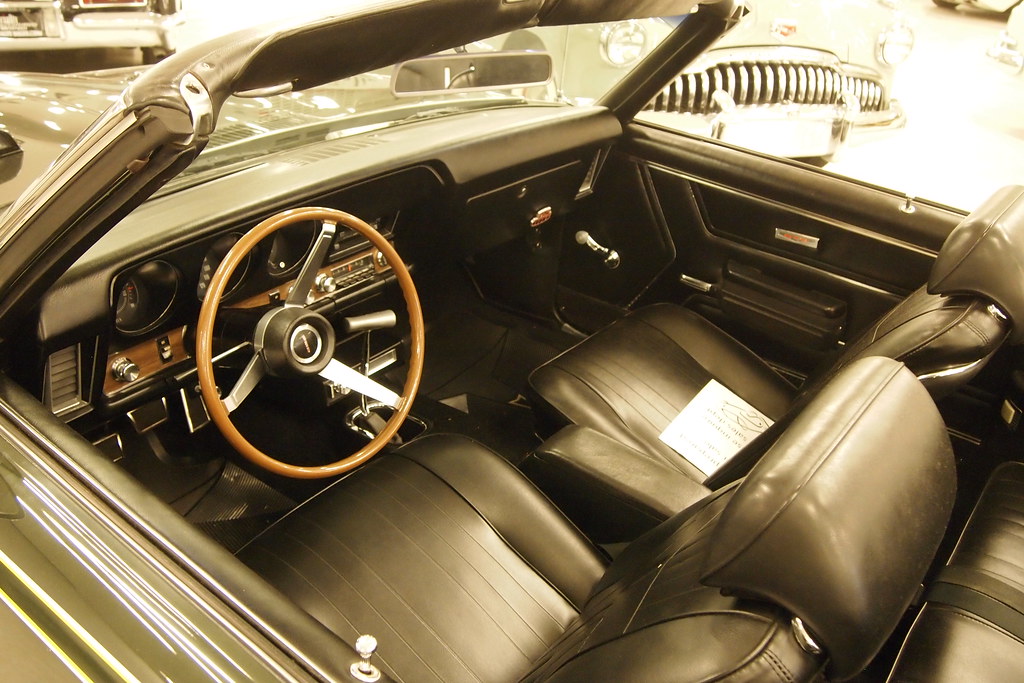
8. **1969 Pontiac GTO Judge**The GTO Judge arrived in a haze of tire smoke and swagger. Loud, proud, and practically glowing in Carousel Red, it brought muscle car madness to the mainstream with an unapologetic flourish. It wasn’t content to merely exist; it demanded attention, challenging every other contender to step up its game and offering a vibrant, youthful exuberance.
It had Ram Air III or IV V8s, pop-art decals, and a rear spoiler that shouted attitude louder than any rival. The Judge didn’t just own the drag strip—it owned the parking lot, too, dominating every scene it rolled into with its unmistakable presence. This was Pontiac at its most audacious, pushing boundaries and breaking norms with a gleeful abandon.
As outrageous as the decade that made it, the Judge has become one of Pontiac’s most sought-after icons, a true testament to the era of no-holds-barred performance and in-your-face styling. It embodies a spirit of rebellion and raw power that resonates deeply with car enthusiasts, securing its legendary status for generations to come.
Car Model Information: 1966 Pontiac GTO Coupe
Name: Pontiac GTO
Caption: 2005 Pontiac GTO
Manufacturer: Pontiac (automobile),Holden
Class: Mid-size car,Compact car,Mid-size car
Production: 1963–1974,2003–2006
Predecessor: Pontiac Tempest
Layout: Front-engine, rear-wheel-drive layout
ModelYears: 1964-1974 2004-2006
Categories: 1970s cars, 2000s cars, All articles with unsourced statements, Articles with short description, Articles with unsourced statements from October 2008
Summary: The Pontiac GTO is a front-engine, rear-drive, two-door, and four-passenger automobile manufactured and marketed by the Pontiac division of General Motors over four generations from 1963 until 1974 in the United States — with a fifth generation made by GM’s Australian subsidiary, Holden, for the 2004 through 2006 model years.
The first generation of the GTO is credited with popularizing the muscle car market segment in the 1960s. Some consider the Pontiac GTO to have started the trend with all four domestic automakers offering a variety of competing models.
For the 1964 and 1965 model years, the GTO was an optional package on the intermediate-sized Pontiac LeMans. The 1964 GTO vehicle identification number (VIN) started with 22, while the 1965 GTO VIN began with 237. The GTO was designated as a separate Pontiac model from 1966 through 1971 (VIN 242…). It became an optional package again for the 1972 and 1973 intermediate LeMans. For 1974, the GTO was an optional trim package on the compact-sized Ventura.
The GTO model was revived for the 2004 through 2006 model years as a captive import for Pontiac, a left-hand drive version of the Holden Monaro, itself a coupé variant of the Holden Commodore.
Get more information about: Pontiac GTO
Buying a high-performing used car >>>
Brand: Pontiac Model: GTO
Price: $59,991 Mileage: 4,408 mi.
Read more about: Seriously, Where Did They Go? The Fascinating Vanishing Act of 14 Legendary Auto Brands
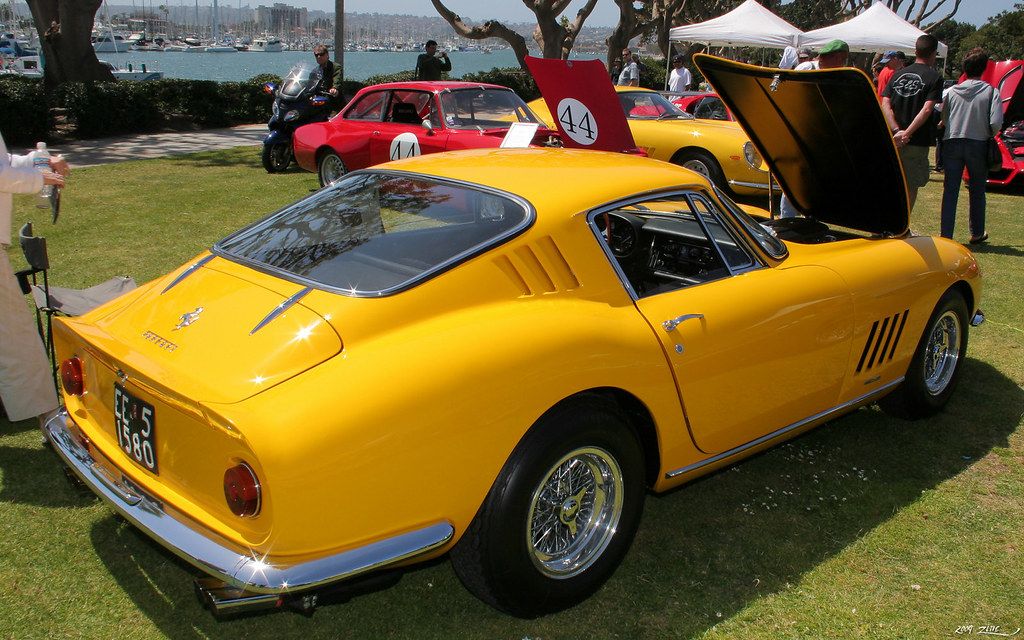
9. **1967 Ferrari 275 GTB/4**The 275 GTB/4 was Ferrari’s way of saying elegance and speed don’t have to compromise. Oh no, my friends, this isn’t a car that forces you to choose between looking good and going fast; it masterfully delivers both in spades. It’s a sophisticated beast, a grand tourer that can devour continents with effortless grace and breathtaking pace.
With refined Pininfarina styling, boasting four overhead cams, and a glorious V12 symphony under the hood, it was grand touring perfection personified. The engine’s song is a mechanical opera, a testament to Ferrari’s unparalleled engineering prowess, making every drive an event. This was a machine built not just to perform, but to mesmerize with its mechanical precision.
Its long-nose, short-deck silhouette still sets hearts racing today, a visual masterpiece that defines the golden age of sports cars. Every curve, every line is meticulously crafted, contributing to an aerodynamic ballet that is as functional as it is breathtakingly beautiful. It’s a design that transcends time, forever etched in the minds of automotive connoisseurs.
Rare and hand-built, each one is a masterpiece, a unique blend of artistry and precision. While the price of entry is sky-high today, so is its status—this is a collector’s Ferrari that’s equal parts artwork and asphalt assassin, a truly unforgettable experience behind the wheel.
Car Model Information: 2024 BMW X5 sDrive40i
Name: Ferrari 275,GTB, GTS, GTB/4, NART Spider
Caption: 1966 Ferrari 275 GTB Series II
Manufacturer: Ferrari
Class: Grand tourer
BodyStyle: unbulleted list
Production: unbulleted list
Wheelbase: 2400 mm
Abbr: on (alloy-bodied 275 GTB/C)
Weight: unbulleted list
Predecessor: Ferrari 250
Successor: unbulleted list
Layout: Front-engine, rear-wheel-drive layout
Engine: unbulleted list
Transmission: transaxle
Designer: unbulleted list
Categories: All Wikipedia articles written in British English, All articles with dead external links, All articles with unsourced statements, Articles with dead external links from April 2024, Articles with permanently dead external links
Summary: The Ferrari 275 is a series of front-engined V12-powered grand touring automobiles with two-seater coupé and spider bodies produced by Ferrari between 1964 and 1968. The first 275 series cars were powered by a 3.3 L (3286 cc) overhead camshaft Colombo 60° V12 engine producing 260–320 hp (190–240 kW). An updated 275 GTB/4 was introduced in 1966, with a revised four overhead camshaft engine producing 300 hp (220 kW). The 275 series were the first road-going Ferraris equipped with a transaxle and independent rear suspension.
Pininfarina designed the 275 coupé and spider bodies, while Scaglietti designed the 275 GTS/4 NART Spyder, of which only 10 were made.
Motor Trend Classic named the 275 GTB coupé/GTS spider as number three in their list of the ten “Greatest Ferraris of all time”, and the 275 GTB/4 was named number seven on Sports Car International’s 2004 list of Top Sports Cars of the 1960s. In a September 1967 road test, Road & Track described the NART Spyder as “the most satisfying sports car in the world.”
Get more information about: Ferrari 275
Buying a high-performing used car >>>
Brand: Ferrari Model: 275 GTB/4
Price: $37,758 Mileage: 39,959 mi.
Read more about: An Unrivaled Eye for the Road: Six Classic Cars in Mick Fleetwood’s Collection That Define True Taste
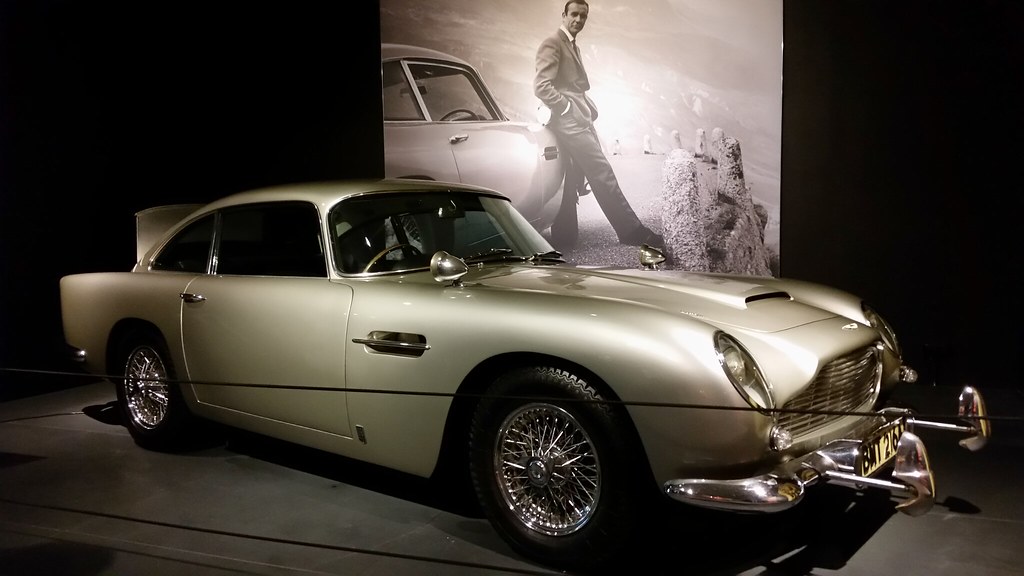
10. **1964 Aston Martin DB5**If ever a car could be a movie star, the 1964 Aston Martin DB5 would win an Oscar, a Golden Globe, and probably a BAFTA too. This is James Bond’s ride, an icon of sophistication, intrigue, and perfectly executed secret missions. It’s not just a car; it’s a legend that’s been featured in more thrilling adventures than most action heroes.
With a powerful 4.0-liter engine, it combines effortless power with timeless, undeniably British design. The DB5 doesn’t just transport you; it transforms you into the world’s most famous spy, even if you’re only heading to the corner shop for milk. It embodies elegance, power, and a hint of danger, all wrapped in a beautifully polished package.
A symbol of British elegance and engineering excellence, it remains highly sought after, a true gem in the crown of automotive royalty. Its enduring appeal lies in its perfect blend of luxury, performance, and that undeniable connection to cinematic history, making it a dream for any serious collector who appreciates a touch of espionage with their speed.
Car Model Information: 2024 BMW X5 sDrive40i
Name: Aston Martin DB5
Manufacturer: Aston Martin
Production: 1963–1965 (1,059 units),2020 (25 units)
Assembly: Newport Pagnell,England
Designer: Carrozzeria Touring Superleggera
Class: Grand tourer
BodyStyle: coupé
Layout: Front-engine, rear-wheel-drive layout
Engine: DOHC,Straight-6,3995 cc
Order: flip
Abbr: on
Powerout: convert
Transmission: ZF Friedrichshafen
Length: 4570 mm
Width: 1680 mm
Wheelbase: 98.0 in
Predecessor: Aston Martin DB4
Successor: Aston Martin DB6
Doors: 2
Weight: 3311 lb
Sp: uk
Categories: All Wikipedia articles written in British English, Articles with short description, Aston Martin vehicles, CS1: unfit URL, Cars discontinued in 1965
Summary: The Aston Martin DB5 is a British grand tourer (GT) produced by Aston Martin and designed by Italian coachbuilder Carrozzeria Touring Superleggera. Originally produced from 1963 to 1965, the DB5 was an evolution of the final series of DB4. The “DB” designation is from the initials of David Brown who built up the company from 1947 onwards.
The DB5 is best-known for its role in the James Bond films. It was first driven by the fictional spy in the film Goldfinger (1964). In 2013, the car featured on a “British Auto Legends” postage stamp issued by the Royal Mail.
Get more information about: Aston Martin DB5
Buying a high-performing used car >>>
Brand: Aston Martin Model: DB5
Price: $37,758 Mileage: 39,959 mi.
Read more about: The Assembly Line Anomaly: 15 Insanely Quirky Car Designs That Defied Convention and Made It To Production

11. **1963 Porsche 911 (original 901 model)**Once upon a time, in Stuttgart, a legend was born—the 1963 Porsche 911. Originally named the 901, it quickly became Porsche’s crown jewel, laying the groundwork for a dynasty that continues to dominate the sports car world. This wasn’t just a new model; it was a revolution, setting a benchmark for performance and everyday usability.
Its distinctive rear-engine layout and iconic, instantly recognizable shape made it an enduring icon of performance and unparalleled design. The air-cooled six-cylinder engine, positioned where you’d least expect it, sang a melody of precision and exhilarating power, a unique mechanical soundtrack that is unmistakably Porsche.
Beloved by enthusiasts and collectors alike, the 911 is far more than a mere car; it’s a symbol of driving perfection, a philosophy on wheels that continues to endure and evolve with each generation. It represents a steadfast commitment to engineering excellence, offering a pure, unfiltered driving experience that has captivated enthusiasts for decades.
Car Model Information: 2021 Porsche 911
Name: Porsche 911
Caption: The 1 millionth 911 produced on display at Volkswagen Group Forum, Berlin
Designer: Ferdinand Alexander Porsche
Manufacturer: Porsche
Production: September 1964 – present
Assembly: Stuttgart,Baden-Württemberg
Class: Sports car
BodyStyle: unbulleted list
Related: unbulleted list
Layout: Rear-engine design,rear-wheel drive
Predecessor: Porsche 356
Categories: 1970s cars, 1980s cars, 1990s cars, 2+2 coupés, 2000s cars
Summary: The Porsche 911 model series (pronounced Nine Eleven or in German: Neunhundertelf, or colloquially Neunelfer) is a family of two-door, high performance rear-engine sports cars, introduced in September 1964 by Porsche of Stuttgart, Germany, and now in its eighth generation. All 911s have a rear-mounted flat-six engine, and usually 2+2 seating, except for special 2-seater variants. Originally, 911s had air-cooled engines, and torsion bar suspension, but the 911 has been continuously enhanced, and evolved across generations. Though the 911 core concept has remained largely unchanged, water-cooled engines were introduced with the 996 series in 1998, and front and rear suspension have been replaced by Porsche-specific MacPherson suspension up front, and independent multi-link rear suspension.
The 911 has been raced extensively by private and factory teams, in a variety of classes. It is among the most successful competition cars. In the mid-1970s, the naturally aspirated 911 Carrera RSR won world championship races including Targa Florio and the 24 Hours of Daytona. The 911-derived 935 turbo also won the 24 Hours of Le Mans in 1979. Porsche won the World Championship for Makes in 1976, 1977, 1978, and 1979 with 911-derived models.
In a 1999 poll to determine the Car of the Century, the 911 ranked fifth — one of two in the top five that had remained continuously in production (the original Beetle remained in production until 2003). The one millionth example was manufactured in May 2017 and is in the company’s permanent collection.
Get more information about: Porsche 911
Buying a high-performing used car >>>
Brand: Porsche Model: 911
Price: $126,995 Mileage: 8,629 mi.
12. **1966 Alfa Romeo Spider Duetto**La Dolce Vita on wheels—meet the 1966 Alfa Romeo Spider Duetto. With its beautifully sculpted round tail and absolutely amazing design, it’s a roadster that embodies pure Italian flair and open-air exhilaration. This isn’t just a car; it’s an invitation to a sun-drenched coastal road, with the wind in your hair and a smile on your face.
Powered by a lively four-cylinder engine, it’s as incredibly fun to drive as it is to behold, delivering a nimble and engaging experience that few cars can match. This car isn’t just about getting from point A to B; it’s about savoring every single moment of the journey, making even the most mundane drive feel like an adventure.
The Duetto’s charm is timeless, an irresistible blend of elegance, simplicity, and sporting spirit, making it a beloved classic among collectors and those who appreciate genuine style. It’s a testament to Alfa Romeo’s ability to infuse passion into every nut and bolt, creating a machine that truly stirs the soul.
Car Model Information: 2024 BMW X5 sDrive40i
Name: Alfa Romeo Spider
Caption: Alfa Romeo Spider Series 2 (“Coda Tronca”)
Aka: Alfa Romeo “Duetto”
Manufacturer: Alfa Romeo
Assembly: Grugliasco,Turin
Production: 1966–1993
ModelYears: 1966–1994
Class: Sports car
Layout: Front-engine, rear-wheel-drive layout
BodyStyle: Roadster (automobile)
Related: Alfa Romeo Giulia,Alfa Romeo 105/115 Series Coupés
Designer: Aldo Brovarone
Predecessor: Alfa Romeo Giulietta (750/101)
Successor: Alfa Romeo GTV & Spider
Sp: uk
Categories: 1970s cars, 1980s cars, 1990s cars, Alfa Romeo vehicles, All articles needing additional references
Summary: The Alfa Romeo Spider (105/115 series) is a two-seater, front-engined, rear-drive roadster manufactured and marketed by Alfa Romeo from 1966 to 1994 in four distinct generations, or “series”, each with modifications ranging from modest to extensive.
As successor to the Giulia Spider, the Spider remained in production for almost three decades. The first three series were assembled by Pininfarina in Grugliasco and the fourth series in San Giorgio Canavese. The last Spider of that series was manufactured in April 1993—the last rear-wheel drive Alfa Romeo before the Alfa Romeo 8C Competizione of 2007.
In 2012, FCA Italy and Mazda studied the possibility of jointly developing a new Spider for 2015 based on the Mazda MX-5 platform. Ultimately, FCA and Mazda chose to manufacture a modern interpretation of the Fiat 124 Sport Spider rather than reviving the Alfa Romeo Spider.
Get more information about: Alfa Romeo Spider
Buying a high-performing used car >>>
Brand: Alfa Romeo Model: Spider Duetto
Price: $37,758 Mileage: 39,959 mi.
Read more about: Auto Royalty: Unveiling Chip Foose’s Masterpieces and the Personal Rides of a Custom Car King
And there you have it, folks! From the sleek, European thoroughbreds that redefined elegance to the roaring, fire-breathing American muscle machines that cemented their places in legend, the 1960s truly delivered an automotive banquet unlike any other. These weren’t just cars; they were symbols of innovation, rebellion, and unparalleled passion, each with a unique story and an engine note that still sends shivers down our spines. So, next time you spot one of these rare beasts, give it a knowing nod—you’re not just looking at a vehicle, you’re gazing at a roaring, tangible piece of history that continues to inspire awe. Now, isn’t that just absolutely brilliant?

